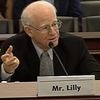Americans are being bombarded today by two very different messages. One is that federal government borrowing is ruining our economy and costing us jobs. The other is that if the government does not borrow in the near-term to create jobs our economy will languish and the Great Recession could return for a devastating encore. Who is right?
This is a very old argument that was resolved many decades ago, yet the new conservative crowd in Washington is firmly of the view that you can create jobs by having the government eliminate jobs. We have not tried that approach in more than 60 years and there is good reason.
In January of 1935 President Franklin Roosevelt submitted a budget that he said was in balance except for $4 billion funding for job creation. That $4 billion amounted to more than 50 percent of total federal spending, or nearly 6 percent of gross domestic product, the largest measure of growth in our economy. But after having won re-election half way through that fiscal year, President Roosevelt began to yield to conservative cries for fiscal discipline. Among the most outspoken was Senator Josiah Baily, a Democrat from North Carolina, who told the Senate in 1937:
"Do not do nothing while America drifts down the inevitable gulf of collectivization . . . . Give enterprise a chance and I will give you the guarantees of a happy and prosperous America."
Sen. Baily along with the Senate Republican leadership produced a conservative manifesto that sounds eerily familiar. An "immediate revision of taxes on capital gains and undistributed profits in order to free investment funds" was their first concern. "Reduced expenditures to achieve a balanced budget, and thus, to still fears deterring business expansion" was their second.
The Fiscal 1937 budget cut government borrowing from the previous level of 5.5 percent of GDP to only 2.5 percent. The following fiscal year the deficit was cut to 0.1 percent, or approximately in balance. Many would consider that good budget policy. But was it good economic policy?
Between 1933, when Roosevelt was elected to his first term in the White House, and 1937 employment in the United States grew by more than 20 percent, with 8 million additional jobs. The unemployment rate in that period dipped from an estimated 25.2 percent to 14.3 percent.
But the federal government's subsequent move toward fiscal austerity could not have been more poorly timed. When federal borrowing was slashed from 5.5 percent of GDP to 2.5 percent it effectively sucked that much activity out of the economy. Those directly affected by that decline in federal activity were unable to make purchases and pay debts to others in the economy. Further damage was inflicted.
The downward spiral continued in 1938 alongside a 2.4 percent of GDP decline in federal borrowing. What was sold as prudent budget policy was cataclysmic economic and social policy. By mid-1938 half of the 8 million jobs that had been restored to the economy during the New Deal were lost, and the unemployment rate was back above 19 percent.
Economists generally classify the economic reversal of 1937 and 1938 as a second depression. Not until military spending began to revive activity in 1940 did unemployment again drop to less than 15 percent.
That was long and painful experience. It would be tragic if we permitted the new conservative crowd in Washington to repeat it.
Scott Lilly is a Senior Fellow at the Center for American Progress.
This article was first posted at AmericanProgress.org.
